The Benefits of Non-Surgical Scar Treatments
Minimally Invasive With Little to No Downtime
Non-surgical scar treatments stimulate the skin’s natural healing without needing cuts, stitches, or extended recovery periods. Most patients can return to their normal activities the same day or shortly after treatment. Some redness or mild swelling may happen, but these side effects usually fade quickly as the skin begins to repair itself.
Targets Both Texture and Color
Effective scar treatments work on more than just the indented areas of the skin. They also help address discoloration by targeting excess pigment or redness that often surrounds scar tissue. By improving both texture and color, treatments can create a more even and natural appearance across the skin.
Promotes Natural Collagen Remodeling
Many treatments help encourage the skin to rebuild itself by boosting collagen production. As new collagen forms, the structure of the skin strengthens, and the scar tissue becomes softer and smoother. The goal is to support real, long-term changes within the skin’s layers.
Customizable Treatments Based on Scar Type and Skin Needs
Not every scar responds the same way, which is why choosing the right treatment matters. We can select different techniques based on whether the scar is depressed, pigmented, or widespread. We create treatment plans that address the specific needs of your skin while harnessing its natural healing abilities.
Improves Overall Skin Tone and Elasticity
Scar treatments can offer benefits beyond scar reduction by improving the skin’s tone, texture, and elasticity. As collagen levels increase and pigmentation becomes more balanced, the treated areas often feel firmer and look healthier. Even areas of skin that were once rough or uneven can take on a smoother and more refreshed appearance over time.
Scar Treatment Options and Technology Offered
EnerJet®
EnerJet uses high-pressure jet injection to deliver hyaluronic acid and healing compounds deep into the dermis without using needles or heat. It works beneath the skin’s surface to stimulate collagen remodeling and encourage the skin to rebuild from within. This internal restructuring can help soften dense tissue, reduce irregular texture, and improve skin elasticity. The process avoids thermal damage and is suitable for a wide range of skin types and scar patterns, including acne scars and post-surgical scars. Sessions are quick, with mild redness or swelling that usually fades within a few hours.
InnoPen Microneedling
Innopen is one of the best scar treatments, using precision-controlled needles to create microchannels in the skin. This treatment encourages the body to rebuild collagen and elastin naturally and helps break down scar tissue to promote the formation of smoother, healthier skin. Innopen offers adjustable depth control, making it easier to treat different scar types with more accuracy. It works well for acne scars, surgical scars, and even some forms of pigmentation issues caused by earlier injuries.
The V-Series
- V-ST Radiofrequency Remodeling: This treatment delivers focused radiofrequency energy into the deeper layers of skin to improve texture and reduce raised or thickened scars. It works well across various skin types with minimal risk of pigment changes and feels like gentle warmth during treatment.
- V-IPL Light-Based Pigment Correction: V-IPL uses intense pulsed light to fade redness, dark spots, and uneven pigmentation around scars. It is especially useful for post-inflammatory hyperpigmentation.
- V-FR Fractional Scar Revision: This option uses fractional radiofrequency to remodel scar tissue. V-FR smooths rough textures, softens dense tissue, and improves the structure of scars with faster recovery thanks to minimal surface damage.
What to Expect Before, During, and After Your Treatment
Before Your Treatment
Before starting scar treatments, we begin with a full evaluation of your skin and the scar types you want to address. We assess the texture, color, depth, and location to recommend the most effective approach for your needs. You may need to avoid sun exposure, certain medications, and specific skincare products in the days leading up to treatment. Preparing the skin properly helps reduce the risk of irritation and supports better healing afterward. We give you detailed instructions based on the treatment plan selected for your skin.
During Your Treatment
During the treatment session, we deliver the energy, light, or controlled stimulation directly to the areas of concern. Most treatments are comfortable, although you may feel sensations like warmth, pressure, or prickling depending on the technique used. Sessions usually last between 30 minutes to an hour, depending on the number and size of the scars being treated. Protective measures, like cooling technology or soothing products, may be applied during or immediately after to help calm the skin.
After Your Treatment
Right after treatment, you may notice some redness, mild swelling, or a warm sensation in the treated area. These effects are normal and usually fade within a few hours to a couple of days, depending on how your skin responds. We recommend using a gentle cleanser, avoiding harsh skincare products, and keeping the area moisturized to support healing. Sun protection is especially important to prevent pigment changes while the skin recovers.
Post-Treatment Tips
- Skip the Scrubs and Active Ingredients: Avoid exfoliating products, retinol, or acids for several days after your treatment. These can irritate the skin while it is trying to repair and may slow down healing.
- Hydrate Inside and Out: Drink plenty of water and use a gentle moisturizer to keep your skin barrier supported. Hydrated skin recovers more efficiently and responds better to treatment.
- Let Redness Fade Naturally: Do not try to cover redness with heavy makeup or pick at any dry or peeling skin. Letting the skin recover without interference helps prevent further irritation or delayed healing.
- Protect Treated Areas From the Sun: UV exposure can darken scars or lead to pigmentation issues during healing. Use a mineral-based sunscreen daily and avoid direct sun for at least a week.
